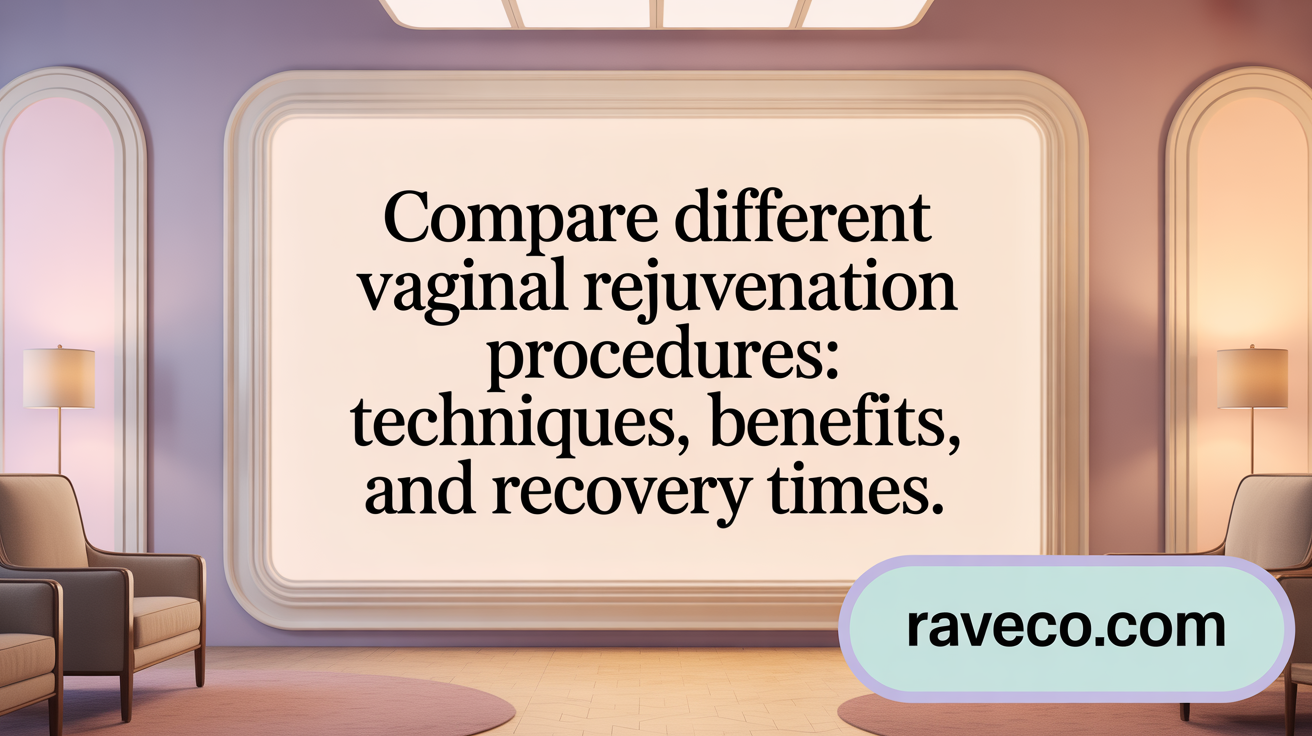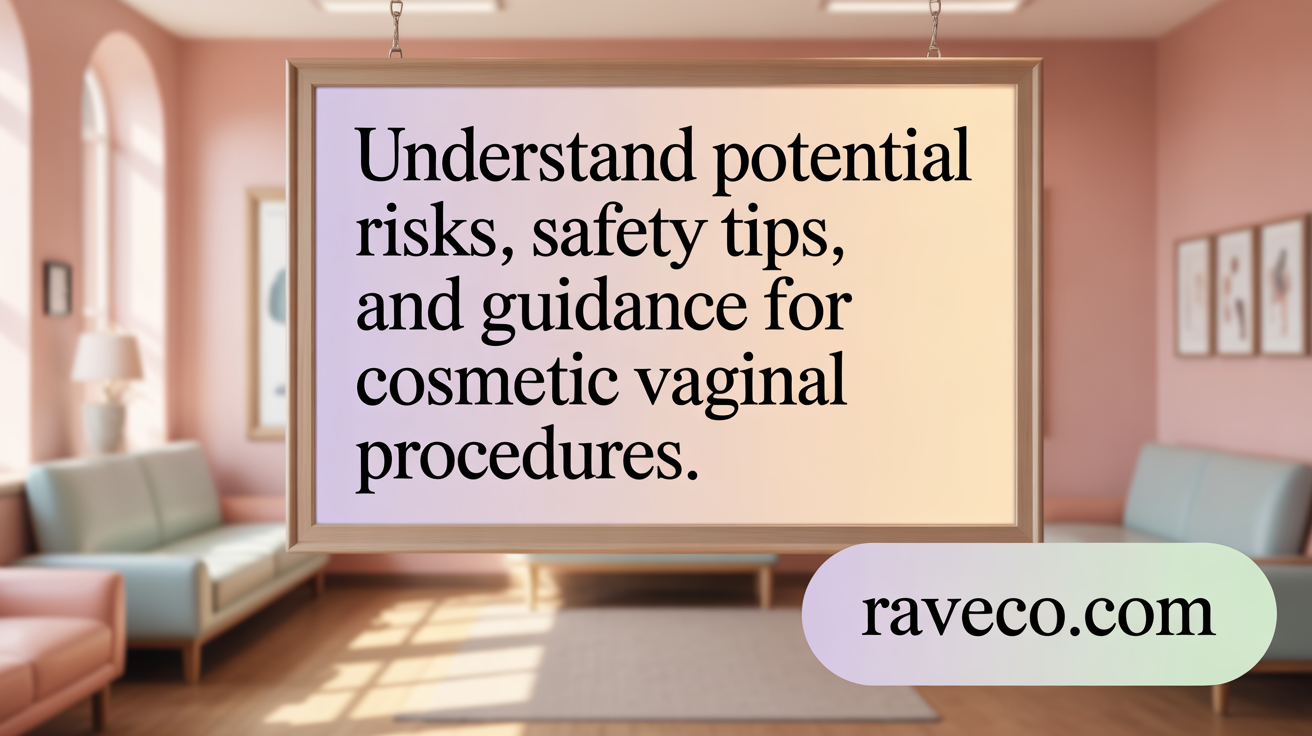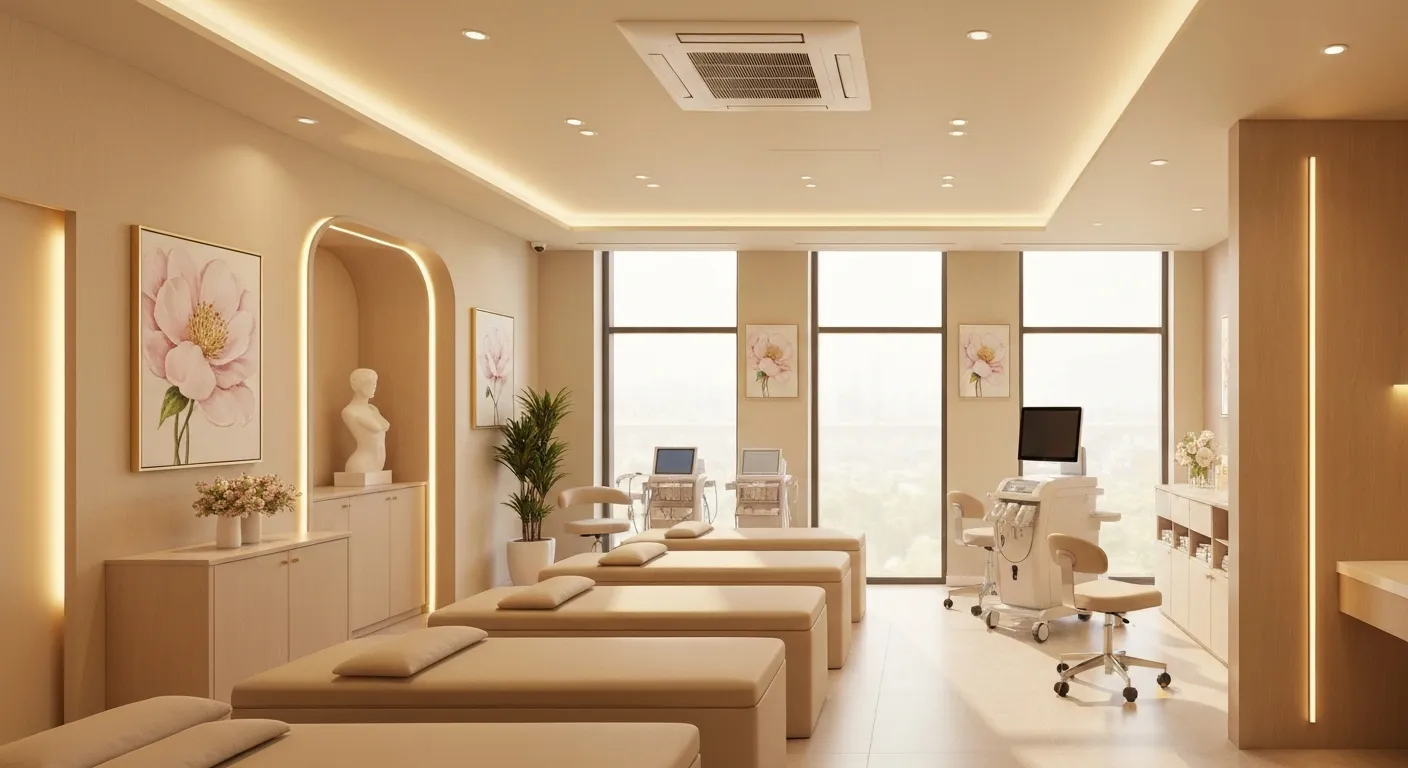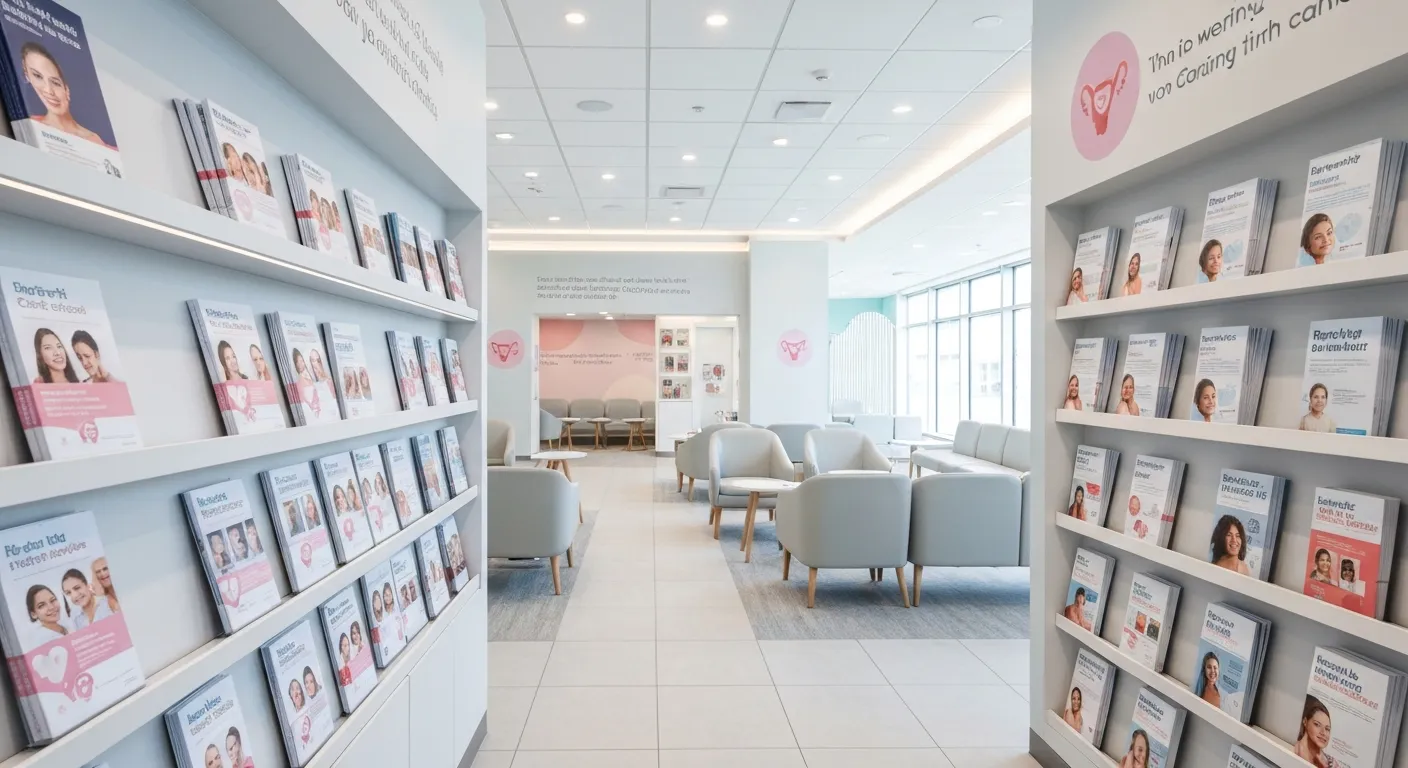Recognizing the Right Time to Address Female Infertility: Key Indicators and Expert Care in Queens

Understanding the Importance of Vaginal Health Restoration
Vaginal health is a vital aspect of overall female wellness and confidence, yet it is often affected by childbirth, aging, hormonal changes, and trauma. Repairing vaginal damage and restoring function not only alleviates physical discomfort but also enhances self-esteem and intimate relationships. This article explores the causes of vaginal damage, available treatment options — both surgical and non-surgical — and provides insights into the benefits, risks, and recovery involved in vaginal rejuvenation and repair procedures.
Causes and Consequences of Vaginal Damage

What are common causes of vaginal damage?
Vaginal damage often stems from various factors, particularly childbirth, aging, and hormonal shifts. During childbirth, trauma such as tears, episiotomies, and muscle stretching can weaken or damage vaginal tissues and support structures. Surgical procedures on the reproductive organs or conditions like prolapse also contribute. As women age, estrogen decline leads to vaginal atrophy—thinning, drying, and loss of elasticity—further Heightening vulnerability.
Genetics can predispose individuals to weaker tissues or abnormal anatomy, while pelvic surgeries might inadvertently cause trauma or scarring. These causes collectively contribute to symptoms such as vaginal laxity, dryness, urinary incontinence, and decreased sensation, impacting both physical comfort and confidence.
Childbirth-related injuries
Childbirth-related injuries are among the most common causes of vaginal damage. Traumatic tears or episiotomies can extend into the perineal area, weakening muscles and tissues. In some cases, the vaginal wall or support muscles become overstretched or torn, leading to issues like urinary incontinence or prolapse.
Healing may involve scarring or tissue stretching, decreasing vaginal tightness and elasticity. For many women, these changes negatively influence sexual satisfaction and daily comfort.
Aging effects on vaginal health
Aging brings about significant changes due to hormonal fluctuations, especially a reduction in estrogen levels during menopause. Such changes result in thinner, less elastic vaginal tissues that are prone to dryness and inflammation.
These effects can lead to decreased blood flow, reduced lubrication, and diminished sensitivity—all contributing to discomfort during intimacy and a decline in overall vaginal health.
Vaginal laxity and its symptoms
Vaginal laxity refers to looseness or decreased tightness of vaginal muscles and tissues. It is often caused by childbirth, aging, or hormonal changes.
Common symptoms include a sensation of vaginal loosening, reduced sexual satisfaction, and sometimes, urinary incontinence. Many women also report increased discomfort, less lubricated sensations, and aesthetic concerns. These issues can detract from confidence, intimacy, and overall well-being.
Emotional and functional impact
The physical consequences of vaginal damage can profoundly affect emotional health and relationships. Women often experience lowered self-esteem, anxiety, and reduced confidence in intimate situations.
Functionally, issues like incontinence, discomfort, and decreased sensation can interfere with daily activities and sexual satisfaction. Addressing these problems through medical or surgical interventions can significantly improve quality of life, restoring both physical comfort and emotional well-being.
Exploring Surgical Vaginal Rejuvenation and Repair Procedures
How do surgical vaginal rejuvenation treatments work and what can be expected?
Surgical vaginal rejuvenation encompasses a variety of procedures aimed at restoring or enhancing the vaginal area’s function and appearance. Vaginoplasty, for instance, involves reconstructing or tightening the vaginal tissues by removing excess tissue or sewing muscles to restore firmness. Labiaplasty focuses on reshaping the labia minora or majora to improve comfort and appearance. Perineoplasty repairs damage or stretching of the perineal muscles caused by childbirth, aiming to restore strength and support. Vulvoplasty, meanwhile, performs reshaping or reconstruction of the vulva, which can include procedures like labia correction or other adjustments.
These surgeries typically require anesthesia — either local or general — and involve making incisions in specific areas. Surgeons may remove or tighten tissues, stitch muscles, or reshape the external genitalia. The procedure duration varies but usually lasts from one to several hours depending on the complexity.
Post-operative recovery involves several weeks of managing discomfort, avoiding strenuous activities, and abstaining from sexual intercourse for a designated period, often around four to six weeks. During this time, proper wound care is essential to prevent complications.
Risks associated with surgical interventions include pain, bleeding, infection, scarring, and potential changes in sensation. Some women might experience numbness or discomfort during intimacy temporarily. However, many patients report improved sexual satisfaction, better urinary control, and greater confidence in their appearance.
The ultimate outcomes depend on individual conditions and goals but generally include enhanced function, aesthetics, and emotional well-being. It is important to consult with a qualified specialist to determine the most suitable procedure and to weigh benefits against possible risks.
Non-Surgical Vaginal Rejuvenation: Technologies and Treatment Options

What is non-surgical vaginal rejuvenation and how does it work?
Non-surgical vaginal rejuvenation involves a range of minimally invasive procedures designed to improve the health and appearance of the vaginal area without the need for surgery. These treatments stimulate the body’s natural healing processes by using energy-based devices such as laser and radiofrequency or through platelet-rich plasma injections.
Laser therapies like MonaLisa Touch and Femilift utilize focused laser pulses to promote collagen growth, which enhances tissue elasticity, firmness, and lubrication. MonaLisa Touch, for example, uses a CO2 laser to gently stimulate collagen production, alleviating symptoms of vaginal atrophy and dryness, often with a series of treatments.
Radiofrequency (RF) procedures, including Forma V and Morpheus8V, deliver controlled thermal energy to tissues, encouraging collagen and elastin synthesis. Forma V is easy on the skin, improving laxity and moisture, with no downtime. Morpheus8V combines microneedling with RF energy to reach internal and external tissues, tightening and rejuvenating vaginal and labial skin.
The O-Shot employs platelet-rich plasma (PRP) injections that stimulate tissue repair, increase sensitivity, and improve sexual function. This approach harnesses growth factors to naturally enhance tissue health.
These treatments are generally quick, often lasting 15 to 45 minutes, and are well-tolerated. They normally require minimal recovery time.
Treatment duration and recovery
Most non-surgical procedures involve a series of sessions spaced weeks apart. Femilift and MonaLisa Touch typically need three sessions, each lasting about 15–20 minutes, with improvements visible within a few months.
RF treatments like Forma V are usually completed in a single session, with follow-ups for maintenance. Morpheus8V treatments last around 30–45 minutes and often involve multiple sessions.
Recovery from these procedures is minimal; patients can usually resume daily activities immediately, with some experiencing mild sensitivity or redness that resolves quickly.
Effectiveness and suitability
While many women experience significant benefits, including increased lubrication, reduced dryness, and improved tissue tightness, outcomes can vary based on individual conditions. These treatments are suitable for women with mild to moderate laxity, dryness, or discomfort caused by aging, childbirth, or hormonal changes.
It’s important to note that scientific evidence supporting some procedures varies, and results are not guaranteed to be permanent. Most non-invasive options are safe when performed by qualified professionals and carry minimal risk.
For women seeking quick, non-invasive options to enhance vaginal health and sexual satisfaction, these technologies offer promising results with little downtime, making them a popular choice for modern women prioritizing wellness and confidence.
Search Query: Overview of non-surgical vaginal rejuvenation technologies
Comparing Surgical and Non-Surgical Approaches: Techniques, Recovery, and Outcomes

How do surgical and non-surgical vaginal rejuvenation treatments compare in terms of techniques, recovery, and outcomes?
Surgical vaginal rejuvenation involves invasive procedures such as vaginoplasty, labiaplasty, and vulvoplasty. These surgeries typically require anesthesia, incisions, tissue removal, and suturing to repair or reshape the vaginal and external tissues. The result is a more permanent correction, often providing significant improvements in vaginal tightness, appearance, and function.
In contrast, non-surgical treatments like laser therapies (e.g., MonaLisa Touch, Femilift™) and radiofrequency devices (e.g., Forma V, TempSure Vitalia®) are minimally invasive. They use focused energy waves to stimulate collagen production, enhancing tissue elasticity, moisture, and sensation without the need for cuts or stitches. The procedures are quick, generally painless, require little to no recovery time, and often involve multiple sessions.
Recovery times differ considerably. Surgical options typically entail a healing period of several weeks, with restrictions on activities, including sexual intercourse usually advised to wait 4-6 weeks post-operation. Patients might experience swelling, bruising, and discomfort during recovery, and some may need a longer duration for full healing.
Non-surgical treatments allow women to resume normal activities immediately or within a day, with minimal discomfort or side effects such as mild sensitivity or redness. These treatments, however, tend to offer temporary results, often lasting 12-18 months, and may need periodic maintenance or repeat sessions to sustain benefits.
Regarding outcomes, surgery usually provides more dramatic, durable improvements, especially in cases of significant laxity or anatomical damage. Non-surgical approaches are effective for mild symptoms, like minor laxity or dryness, and are suitable for women preferring less invasive options. Combining therapies, such as laser and platelet-rich plasma injections (O-Shot®), can further enhance results.
In summary, surgical procedures excel in permanent, comprehensive correction but involve longer downtime and higher risks. Non-invasive therapies offer safer, quicker relief with less hassle, ideal for mild to moderate concerns or for women who prefer to avoid surgery. Tailoring the approach depends on individual needs, severity of symptoms, and personal preferences.
Risks, Safety Considerations, and Patient Guidance

What are the potential side effects and risks of vaginal rejuvenation procedures?
Vaginal rejuvenation treatments, whether surgical or nonsurgical, involve certain risks that patients should carefully consider. Surgical options like vaginoplasty, labiaplasty, or vulvoplasty can lead to complications such as pain, bleeding, infection, and scarring. Some women experience dyspareunia (painful intercourse), numbness, or dissatisfaction with the cosmetic or functional results. There is also a chance of injury to surrounding tissues, which may require further intervention.
Nonsurgical procedures, including laser or radiofrequency treatments like Femilift™ or MonaLisa Touch, generally carry fewer risks but can still cause temporary discomfort, mild sensitivity, or spotting. These treatments are minimally invasive and typically safe when performed by qualified professionals.
Need for qualified practitioners
It is crucial that vaginal rejuvenation procedures be carried out by healthcare providers with expertise in gynecologic and cosmetic reconstructive surgery. Proper training ensures safety and optimal results, minimizing the risk of complications. Patients should verify the credentials and experience of their clinician before proceeding.
Post-procedure care and monitoring
Following a procedure, adherence to post-care instructions is vital. Rest, avoiding strenuous activity, and specific follow-up visits help ensure proper healing. Patients should be alert for signs of complications such as excessive bleeding, persistent pain, signs of infection (like fever, unusual discharge), or abnormal swelling. Immediate medical attention is necessary if adverse symptoms occur.
Managing patient expectations
While many women find vaginal rejuvenation beneficial for improving comfort, appearance, and sexual satisfaction, outcomes are not guaranteed to be permanent. Results vary depending on individual conditions and treatment types. Clear communication with healthcare providers about realistic goals helps prevent disappointment.
Misconceptions about treatments
Some misconceptions include the idea that all treatments are risk-free or produce instant, long-lasting results. In reality, non-surgical options may require maintenance, and all procedures carry inherent risks. Patients should seek evidence-based information and consult qualified specialists to make informed decisions.
Costs, Treatment Suitability, and Realistic Expectations

What are the typical costs associated with vaginal rejuvenation treatments, including laser options?
Vaginal rejuvenation treatments vary in cost depending on the type and extent of the procedure. Non-surgical, laser-based options like Femilift™ or MonaLisa Touch usually range from $1,400 to $4,500 per session. Multiple sessions are often recommended to achieve desired results. Surgical procedures, such as vaginoplasty or labiaplasty, typically start at around $4,000 and can go higher based on complexity, surgeon experience, and geographical location.
Are these treatments covered by insurance?
Most insurance plans do not cover vaginal rejuvenation procedures. Exceptions might exist if the treatment addresses medical issues such as childbirth-related injuries or specific medical conditions. Cosmetic procedures, including those for aesthetic enhancement, are generally considered elective and are paid out-of-pocket.
How do I know if I am a candidate?
Candidates should have clear concerns like vaginal laxity, dryness, discomfort during intimacy, or aesthetic issues. A comprehensive assessment by a qualified healthcare provider is necessary to determine suitability. This involves physical examinations, discussions of symptoms, and personal goals. Personalized care plans are essential to optimize outcomes.
Why is personalized care important?
Each woman's anatomy and concerns are unique. Tailoring the treatment plan—including selecting non-invasive methods like laser therapy or minimally invasive procedures—ensures that results meet individual expectations while minimizing risks. Your provider can suggest the best combination of treatments for your specific needs.
Are there effective home remedies?
Currently, no scientifically validated at-home methods can replace professional vaginal rejuvenation treatments. While lifestyle changes like pelvic floor exercises (Kegels), maintaining good hygiene, and managing hormonal health can support vaginal wellness, they are not substitutes for medical procedures aimed at tissue repair or rejuvenation.
How should I maintain results?
Post-treatment, maintaining vaginal health involves routine gynecological care, practicing pelvic floor exercises, staying hydrated, and managing hormonal changes, especially during menopause. Regular check-ups and discussions with your healthcare provider help ensure sustained benefits and early intervention if needed.
| Treatment Type | Typical Cost Range | Number of Sessions | Additional Notes |
|---|---|---|---|
| Laser Vaginoplasty (Femilift™, MonaLisa Touch) | $1,400 - $4,500 per session | 1-3 sessions | Improves elasticity, moisture, and comfort |
| Surgical Vaginoplasty | Starting at $4,000 | Single procedure | Permanent tightening, but with longer recovery |
| Non-invasive RF treatments (Forma V) | $600 - $1,200 per session | 1-3 sessions | Stimulates collagen, improves tone |
| Platelet-Rich Plasma (O-Shot®) | $800 - $2,000 per session | 1-2 sessions | Enhances sensation and lubrication |
Ensuring a realistic outlook from the outset helps women make informed decisions and set proper expectations regarding the costs and results of vaginal rejuvenation treatments.
Restoring Comfort and Confidence Through Vaginal Health Solutions
Repairing vaginal damage and restoring intimate health are achievable goals through a range of tailored surgical and non-surgical treatments. Understanding the causes, treatment options, potential risks, and realistic expectations empowers women to make informed decisions about their care. Whether addressing functional issues post-childbirth or seeking cosmetic improvement, professional guidance ensures safe, effective outcomes that enhance quality of life, self-esteem, and sexual wellness. Ongoing vaginal health maintenance and regular medical check-ups remain crucial for sustained wellbeing and confidence.
References
- Vaginal Rejuvenation: Treatment, Purpose & Procedures
- Improving Your Self-Confidence with Vaginal Rejuvenation
- Vaginal Rejuvenation - Fort Myers - Contemporary Health Center
- Vaginoplasty: Procedure Details, Risks, Benefits & Recovery
- The Complete Guide to Non-Surgical Vaginal Rejuvenation
- Diva Vaginal Rejuvenation: The Non-Surgical Fix for Intimacy ...
- Get Your Post-Baby Sex Life Back With Non-Invasive Vaginal ...
- Vaginal Rejuvenation | Lutz, FL - Altavida OBGYN
- Rediscover Comfort and Confidence with Vaginal Rejuvenation ...





.png)